Pantex Blog
Pantexans Help Hungry Kids
Donations delivered to Snack Pak 4 Kids
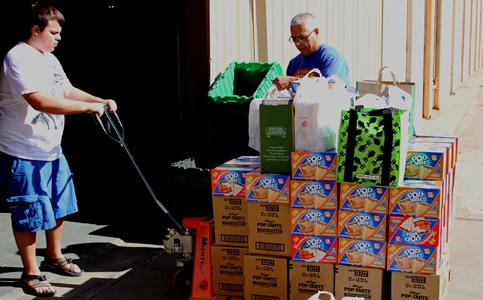
For the past two weeks, a group of volunteers at Pantex has been collecting donations for the Snack Pak 4 Kids program, gathering an impressive amount of food for needy children.
Pantexans donated more than $1,000 to the effort, as well as a variety of food items, which were placed in barrels located throughout the plant.
Snack Pak 4 Kids is an Amarillo-based charity started in 2010 to provide backpacks with snacks in them for children to take home for the weekend. The program is designed to provide food to hungry children when they are away from school and unable to access a reliable source of sustenance. The program serves over 4,000 students in 24 school districts in the Texas Panhandle.
The volunteers this week delivered 5,000 Pop Tarts, 82 jars of peanut butter, as well as other snacks and money donated by Pantexans.
The effort was led by Pantexans Josh and Tracy Cunningham, Rick and Lisa Jones and Sherry Philyaw.
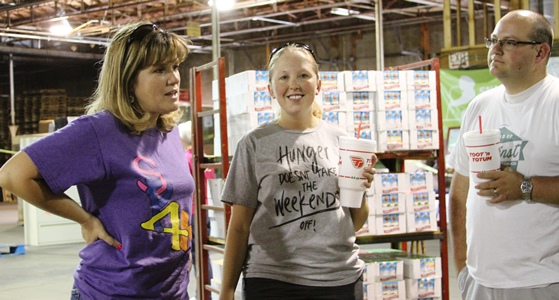
Admiral Haney Visits Pantex
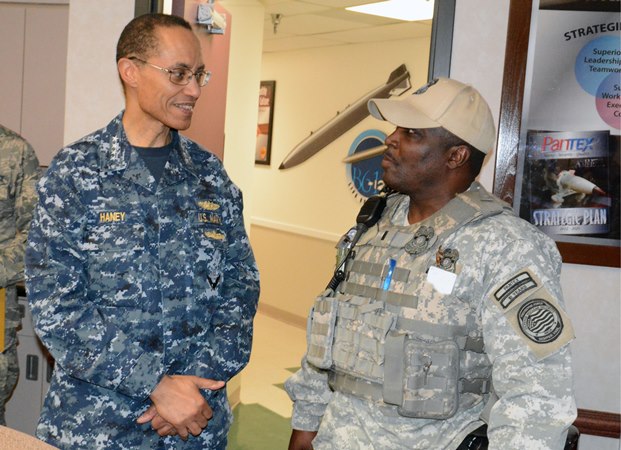
Admiral Cecil Haney, Commander, USSTRATCOM, visited Pantex Tuesday to tour various facilities and conduct an all-hands meeting with Pantex workers. Haney thanked Pantexans for the work they perform to help maintain a credible nuclear deterrent, thus ensuring the safety of the United States.
Haney briefed Pantexans about the responsibilities and capabilities of USSTRATCOM and discussed how the work done at Pantex factors into that mission. Haney said as the number of weapons in the U.S. stockpile decreases, the work done at Pantex to ensure the safety and reliability of each nuclear weapon becomes even more important.
Haney told Pantexans that although they do not wear a military uniform, the work they do to protect America is as crucial as the work done by those who do.
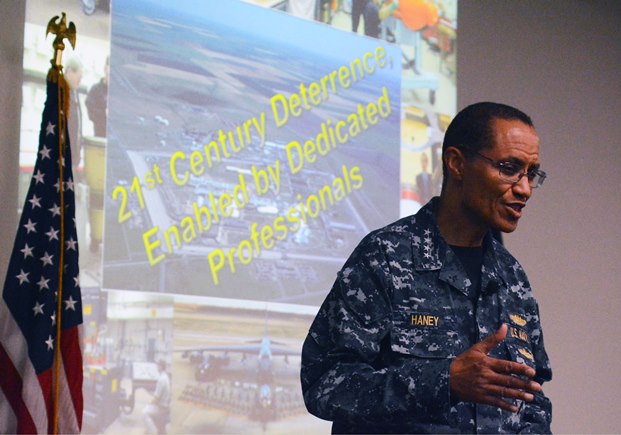
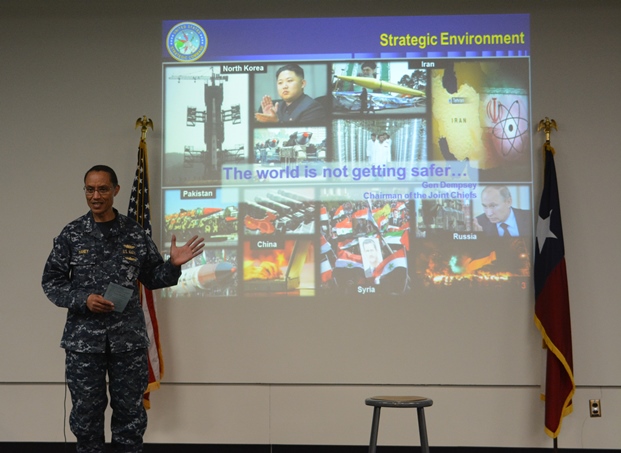
Secretary Makes an Impression
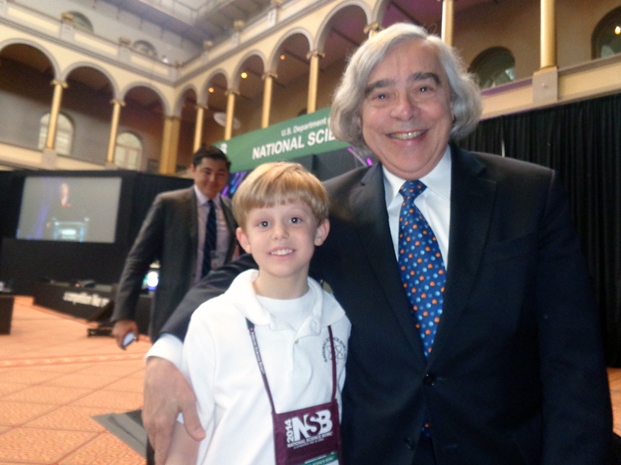
When B&W Pantex Science Bowl Coordinator Debra Halliday decided to take her 9-year-old grandson with her to the national Science Bowl competition in Washington DC last month, she thought he would have a memorable trip, but she didn’t know just how memorable it would be.
Halliday said her grandson, Griffin Koehn, was with her during the awards ceremony when Secretary of Energy Ernest Moniz was congratulating the winners and presenting trophies. As Moniz exited the stage, he stopped for a moment to talk with Griffin and posed for a photo that will no doubt become a cherished memento.
“Secretary Moniz was so gracious,” Halliday said. “He shook hands with Griffin, and Griffin said to him ‘When I grow up, I want to be a scientist just like you.”
Halliday said her grandson enjoyed being a runner during the competition, as well as visiting some of the historic sites in Washington. But getting to meet the secretary of energy was the best part of the entire trip.
Area Team Races Ahead in Washington
Panhandle Junior High takes second at National Science Bowl Car Race
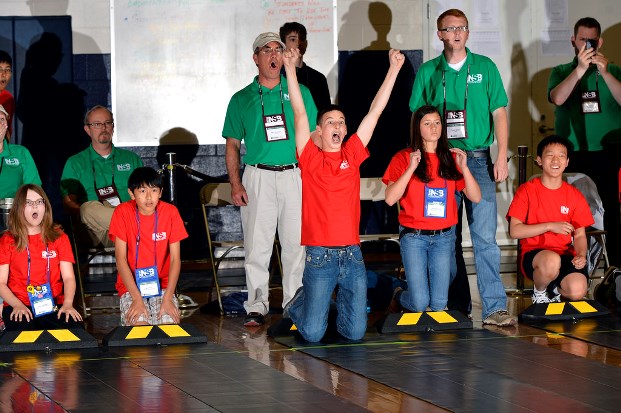
A team of five competitors from Panhandle Junior High School capped off an eventful visit last week to the nation’s capital with a second place finish in the electric car race competition at the National Science Bowl.
Coach Kevin Meyer said the team competed hard, but was barely edged out at the finish line of the final race.
“Our team was very proud of that finish, only 15/100 of a second difference from first place,” Meyer said. “We had a great time and will treasure the experience forever.”
The academic portion of the Science Bowl is supplemented each year for middle school students with a battery powered car race that gives competitors the chance to apply their knowledge to designing a car to compete on a 20-meter track.
The Panhandle team won the right to represent the area at the national competition by besting 40 other teams in the Pantex Middle School Science Bowl competition in February. They were joined on the trip by a team from Lubbock High School, which won the high school competition.
The Department of Energy sponsors the Science Bowl competition each year to give students across the country a chance to compete in a contest of science and math knowledge. More than 50 regional competitions are conducted, with the winners having the chance to represent their area in Washington.
Debra Halliday, Science Bowl coordinator, traveled with the team as a sponsor and said the students relished the chance to demonstrate their knowledge of science and math, and to visit some of the iconic locations in Washington.
“It was such a pleasure to see this team do so well this year. They worked hard for a long time to receive this recognition,” Halliday said.
The members of the team are: Bradlee Brandvik, Arianna Hann, Samuel Koone, Noah Ford and Grace Kuehler.
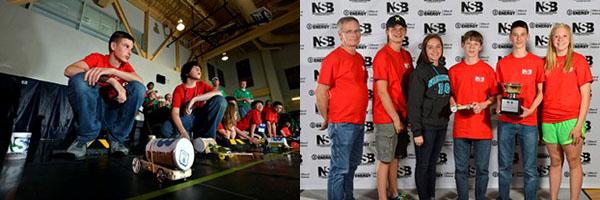
Wild Pantex – The Official Bird of Pantex?
Article by Jim Ray, Pantex Wildlife Biologist/Scientist
Every state in the United States has designated a bird species as its state bird. Texas’ is the Northern Mockingbird, Oklahoma’s the Scissor-Tailed Flycatcher, and New Mexico’s is the Greater Roadrunner. Besides Texas, the mockingbird is also claimed by four other states: Arkansas, Florida, Mississippi and Tennessee.
So, what if Pantex were to designate an “official bird” – which bird would it be? We only have 202 to choose from; that’s how many are on our all-time bird list. Well, let’s omit the four species of exotics from consideration. That is the House Sparrow, European Starling, Eurasian Collared Dove, and Feral Pigeon (Rock Dove.) Note that the state of Delaware chose the Blue Hen Chicken, South Dakota chose the Ring - Necked Pheasant, and Rhode Island the Rhode Island Red Chicken as their state bird – all exotics.
There are many good candidates here at Pantex. For example, the American Bald Eagle is a logical candidate because it elicits second glances and conversation when it is observed during its fall through spring stay here in the Panhandle. Its status as our national symbol garners it extra points, as it should.
And how about the Swainson’s Hawk, which is commonly observed here? We are learning so much about them through our collaborative work with West Texas A&M University and the United States Geological Survey (U.S.G.S.) Texas Cooperative Fish and Wildlife Research Unit at Texas Tech University. Data gathered by backpack transmitters is recorded year-round, thus helping us learn how this bird is affected by rapidly expanding wind energy development. Because the units gather and transmit data year-round, we are learning about migration and wintering ecology of these birds. However, the Swainson’s Hawk is likely more numerous around the Plant now, than historically. Nest trees around here are always either an exotic species, or they are in a cottonwood or willow tree that’s existence is enabled by the altered moisture regime of a roadside ditch, pit, supplemented water, or other such situation.
I will argue that we would need to focus our nominations on species that are considered true shortgrass prairie species, one that doesn’t rely on structures built by man. Good candidates are the Horned Lark, Killdeer, and Western Meadowlark. But, there is an additional candidate.
Why not the Western Burrowing Owl? This is a neat little owl that lives in burrows, almost exclusively in our prairie dog colonies. Everybody gets excited when I point one out and even more so when they discover that I can imitate a vocalization they make when securing mates and defending territories. Banding has demonstrated that most of our resident burrowing owls leave Pantex for the winter months; however, a few individuals from points north are usually around in the winter.
We have spent considerable effort studying burrowing owls, much of this through collaboration with Texas Tech University and the U.S.G.S. Texas Cooperative Fish and Wildlife Research Unit at Texas Tech. The little fellow is a species of regional conservation priority (U. S. Fish and Wildlife Service) and a species of international concern. A great representative of an indigenous bird – the Western Burrowing Owl would be my choice as the Official Bird of Pantex.
I asked our Agronomist, Monty Schoenhals, who is an avid birder, what bird would be his choice. His nomination would be the Western Meadowlark. Like the Western Burrowing Owl, the meadowlark is very recognizable, but this shortgrass prairie representative is abundant and can be seen and heard across the property. A good choice, indeed.
What would be your choice?
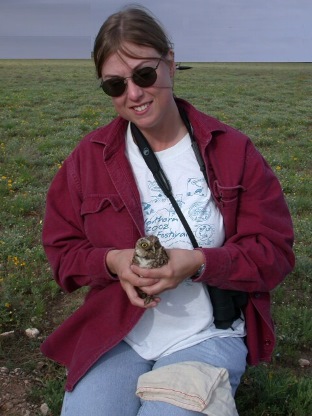
Photo: Texas Tech Graduate Research Assistant, Erica Chipman, holds a Western Burrowing Owl, as part of fieldwork associated with her M.S. Thesis, Behavioral Ecology of Western Burrowing Owls (Athene cunicularia hypugaea) in Northwestern Texas (Chipman 2006).
